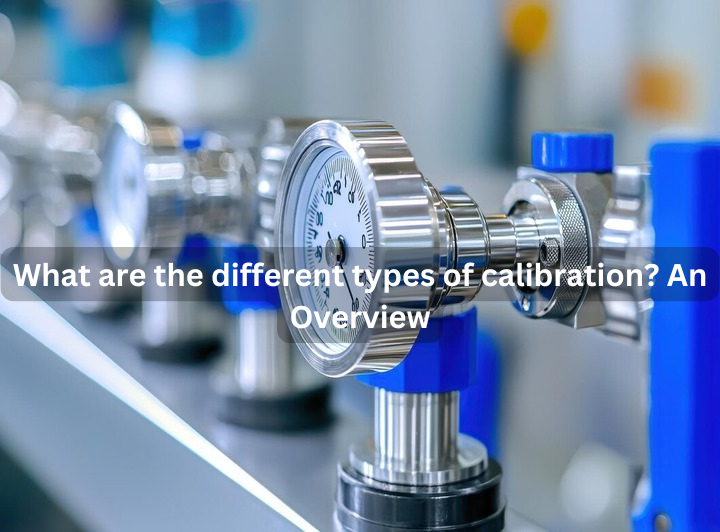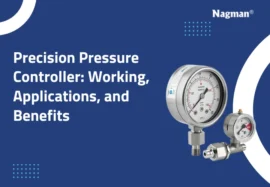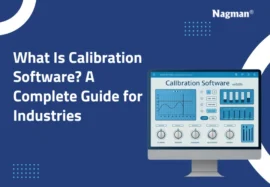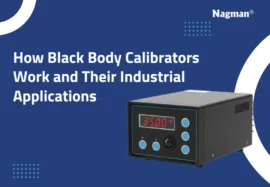Introduction
Calibration is the process of comparing a measuring instrument’s accuracy against a known reference standard to ensure reliable and consistent readings. In simple terms, it verifies how close your measurement device is to the true or accepted value.
Calibration plays a vital role across industries such as pharmaceuticals, oil and gas, food processing, research laboratories, and manufacturing, where even small measurement errors can lead to product defects, safety issues, or regulatory non-compliance.
To maintain accuracy and quality, instruments undergo different types of calibration, each focused on a specific measurement parameter—such as temperature, pressure, flow, or electrical signals. Let’s look at the most common calibration types used in industries and laboratories today.
1. Pressure Calibration
Pressure calibration ensures that pressure-measuring devices operate accurately within the specified limits. It helps industries maintain safety and system efficiency, especially in processes involving gas and hydraulic pressure.
At Nagman Instruments, high-accuracy pressure gauge calibratorn and sensors are used to verify readings against a known reference.
Instruments Calibrated:
Pressure gauges
Digital indicators
Transducers and transmitters
Applications:
Used widely in the oil & gas industry, manufacturing plants, and pneumatic systems for performance monitoring and leak prevention.
2. Temperature Calibration
Temperature calibrators ensure accurate readings in devices used to measure and control heat. In industries such as pharmaceuticals and food production, even minor temperature variation can affect product safety and quality.
The process involves comparing a temperature-measuring device with a reference thermometer under stable conditions.
Common Instruments:
RTDs (Resistance Temperature Detectors)
Thermistors
Thermocouples
Freezers, ovens, and furnaces
Example:
A temperature calibration ensures that a laboratory incubator maintains a consistent temperature required for microbial growth experiments.
3. Electrical Calibration
Electrical calibration validates instruments that measure voltage, current, resistance, capacitance, time, and frequency. It ensures that all test and measurement devices perform within specified tolerances.
Instruments Calibrated:
Multimeters
Oscilloscopes
Frequency counters
Insulation testers
Loop testers
Purpose:
Electrical calibration is essential for electronic manufacturing, power generation, and automation industries where accuracy directly impacts performance and safety.
4. Mechanical Calibration
Mechanical calibration focuses on physical measurements such as force, mass, torque, and dimensional accuracy. It ensures that instruments used in production or quality testing deliver consistent results.
Instruments Calibrated:
Scales and balances
Load cells and force gauges
Torque wrenches
Micrometers, vernier calipers, and height gauges
Example:
In automotive manufacturing, torque wrench calibration ensures every bolt is tightened to the correct specification.
5. Flow Calibration
Flow calibration checks the accuracy of devices used to measure the flow rate of liquids or gases. It ensures that systems deliver the correct flow levels, preventing process disruptions and maintaining product consistency.
Instruments Calibrated:
Thermal mass flowmeters
Laminar flowmeters
Rotometers (gas & air)
Turbine meters
Applications:
Flow calibration is crucial in refineries, water treatment plants, and chemical processing industries.
6. Pipette Calibration
In laboratories, pipette calibration ensures accurate volume measurement during testing and analysis. Even the smallest error can alter experimental results or product formulations.
Instruments Calibrated:
Single-channel pipettes
Multi-channel pipettes
Electronic pipettes
Purpose:
To maintain repeatable and traceable results in laboratory research and pharmaceutical testing.
7. Specialized Calibration Types
Apart from standard categories, industries also perform specialized calibrations based on specific conditions and needs.
These include:
Dynamic Calibration: Used when instruments operate in motion or fluctuating conditions.
Static Calibration: Conducted under fixed, stable conditions.
Field Calibration: Performed at the equipment site for convenience.
Traceable Calibration: Linked to national or international standards for guaranteed accuracy.
Master Calibration: Used to verify other calibration devices for hierarchy accuracy.
Why Calibration Matters
Calibration ensures accuracy, repeatability, and compliance with international standards such as ISO, NABL, and ASTM. Regular calibration also reduces downtime, prevents costly rework, and improves product quality.
Key Benefits:
Reliable and consistent measurement accuracy
Regulatory compliance and audit readiness
Extended equipment life and reduced maintenance
Improved safety and process efficiency
How Often Should Instruments Be Calibrated?
The frequency of calibration depends on factors like instrument usage, environmental conditions, and required accuracy.
Generally:
Highly used instruments → every 6 months
Moderate use → annually
Critical safety instruments → before each major operation
Regular calibration scheduling ensures your devices always perform within tolerance and deliver dependable results.
Conclusion
Understanding the different types of calibration helps industries maintain precision, safety, and quality across operations. Each calibration type—pressure, temperature, electrical, mechanical, flow, and pipette—serves a unique purpose in ensuring measurement reliability.
With decades of expertise, Nagman Instruments provides accurate, traceable, and ISO-compliant calibration services for diverse industries.
From routine checks to complex verification, we ensure your instruments perform with confidence, consistency, and compliance.






